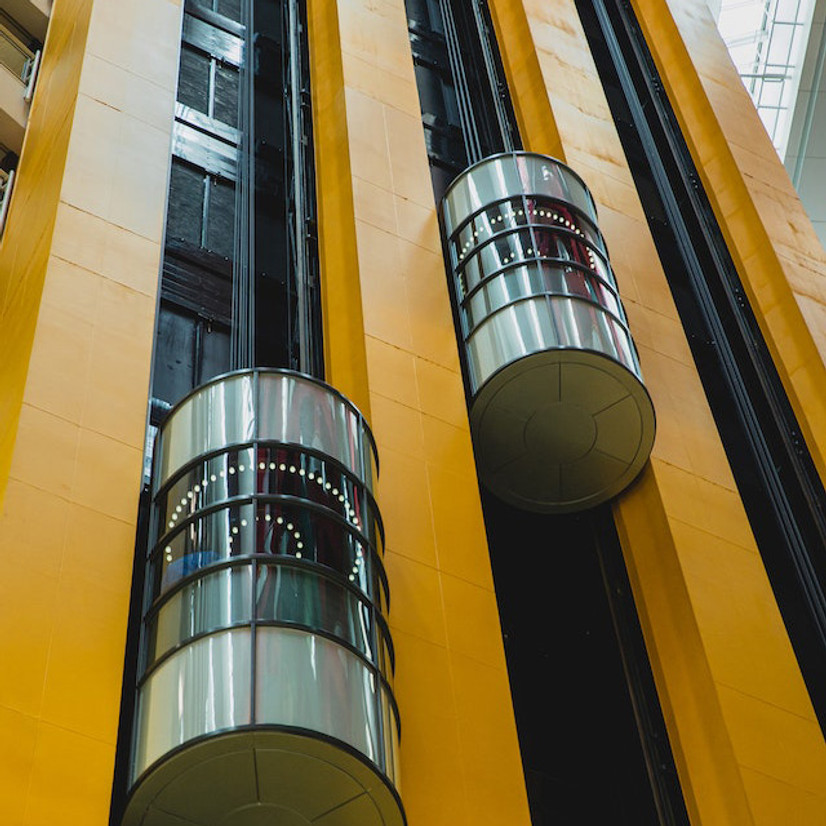The Rise of the Elevator
For many people, elevators are one of those parts of everyday life that you just don't think about. They get in, push a button, get off and go about their day without giving it a second thought. But elevators at not only mechanically fascinating, they have also played a major role in shaping our modern day society.
Getting Into Elevators
Elevators are an integral part of the modern world, so much so that most don't think twice about using one throughout the day. However, these seemingly mundane devices have a much richer history than some would assume. Let's explore the evolution of the elevator from its earliest known predecessors, to its current form and the potential it has in the future.
Early Ancestors
The earliest elevator-like devices used by humans were hoists. The winch was a commonly used device from at least the 4th century BC onward, with the ancient text "Mechanical Problems" noting that pulley hoists were common for use in architecture.1 Using ropes wrapped around scaffolding, these builders could more easily pull large objects off the ground.
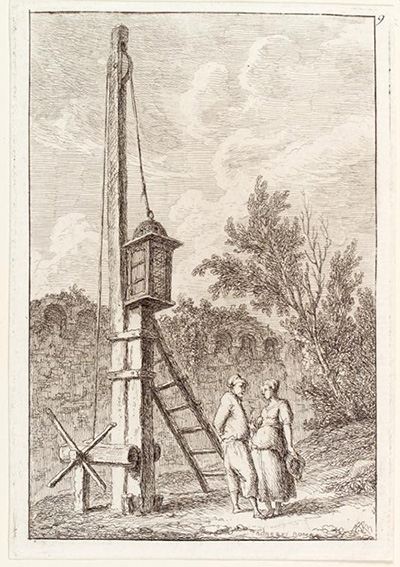 The pulley hoist, an early predecessor to the elevator
The pulley hoist, an early predecessor to the elevator
This remained the standard for many years, until the invention of chains a couple centuries later. The next big step forward came sometime in the 1500's, indicated by the publication of the De re metallica in 1556.2 This architectural text noted how the use of hoists in mining lessened the effort it would take to raise materials from the earth. At this time, people, animals, and even water were used to power the hoists.
In 1854, English inventor Thomas A. Weston created the differential pulley, also known as the chain hoist, which leveraged gravity to greatly increase the pulling power of hoists.3 Its design also allowed for loads to stay in place when held until the chain was pulled. Through combinations with steam engines and eventually electricity, hoists became easier to use and more efficient than ever before.
Early Elevators
Notably, hoist technology was generally not used for the transport of people. Attempting to haul many people inside a box attached to pulleys would simply be too inefficient and difficult to be worth it at the time. This is why the majority of hoists were exclusively used for hauling materials.
That isn't to say there weren't exceptions, however. In fact, hoist technology was used to create elevator-like devices as early as 236 BC.4 To no one's surprise, it was Archimedes who drew up the plans. The Roman Colosseum also used primitive elevators to raise and lower animals into the arena with minimal contact from humans.5 By 1743, King Louis XV had a "flying chair" built to connect his palace to the home of his mistress.4
These were fairly niche examples, though, and aren't really what we think of when someone says the word "elevator." Much closer to that idea was created almost 90 years later in 1835. The Teagle Elevator, on the other hand, was the first power-driven hoist, using belts and counterweights to lift passengers into the air.6 It revolutionized the idea of the 1823 "ascending room" tourist invention in London, which only used steam power.
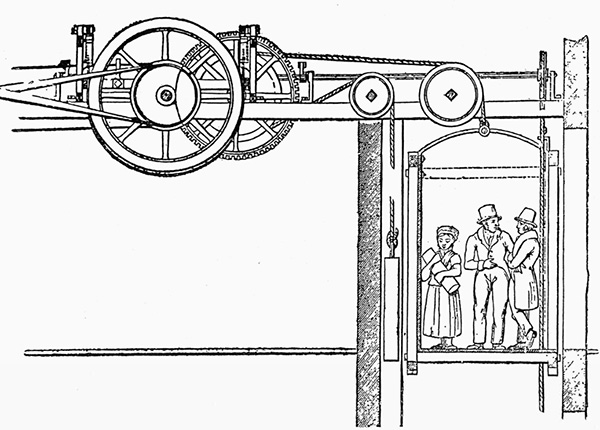 Technical illustration of the Teagle Elevator
Technical illustration of the Teagle Elevator
Industrial Elevator Revolution
Things started heating up in 1852. This is when Elisha Graves Otis invented a braking system for elevators to prevent them from falling if their rope snapped. While other elevators were created before this date Gaetano Genovese's own flying chair in 1845 being one of the most innovative, Otis' invention is credited with starting an elevator "boom" of sorts after a successful demonstration at the Crystal Palace in 1854.7 This showed that it was safe to transport people in the modern elevator, leading to the first passenger-specific elevator to be installed at 488 Broadway three years later.
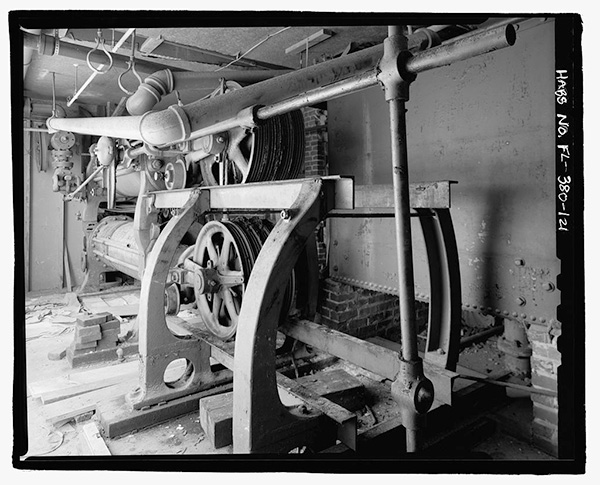 The mechanics of an early steam powered elevator
The mechanics of an early steam powered elevator
Before long, more and more buildings began to install elevators, buyers ranging from factories to hotels and everything in between. Electricity finally entered the equation in 1880, when German inventor Werner von Siemens constructed the first electric-powered elevator.8
Further iterations on von Siemens' design led to better, faster, and safer electric elevator designs, making them popular enough to eventually be bought out by the Otis Elevator Company just 15 years later. It was during this time that many of the hallmarks of the elevator were also created, such as automatically closing doors and hydraulics.8 It was also during this stretch of time that the dumbwaiter was invented, eventually being adopted into many businesses and homes.9
Turn of the Century
In 1900, the Paris Universal Exposition was held at the Eiffel Tower, featuring not only elevators but automatically moving platforms.7 Past 1900, elevators began to develop rapidly. Like most other things, this was brought about by the need for major advances in technology throughout World War I and World War II.
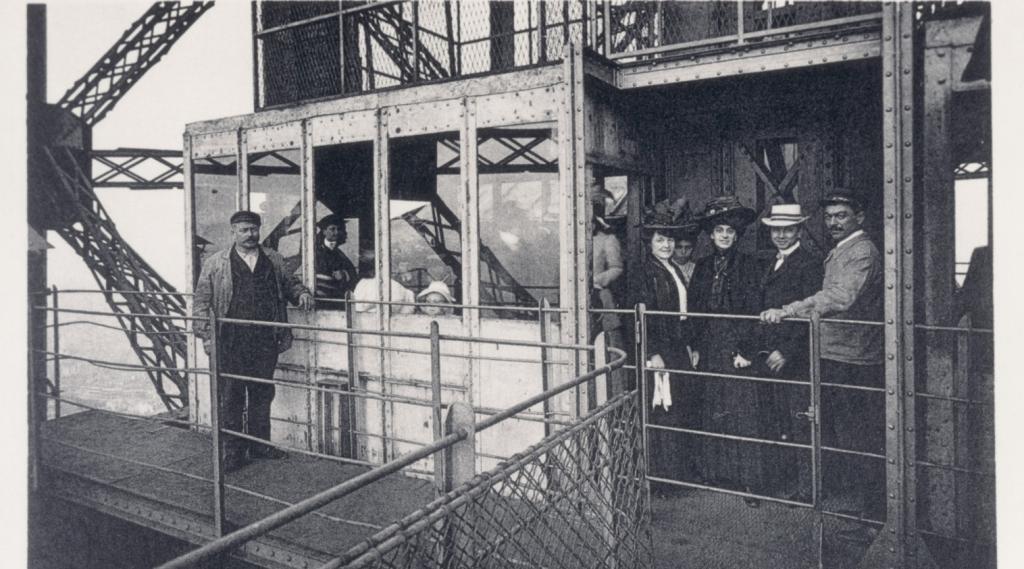 The Edoux elevator in the Eiffel Tower
The Edoux elevator in the Eiffel Tower
While a plethora of efficiency, safety, and capacity improvements took place in this time, the biggest change was no doubt in automation. Prior to this point, all passenger elevators required an operator to use. By 1900, though, it was fully possible for elevators to run on simple button commands by passengers. Despite this, many rejected this as unsafe.10
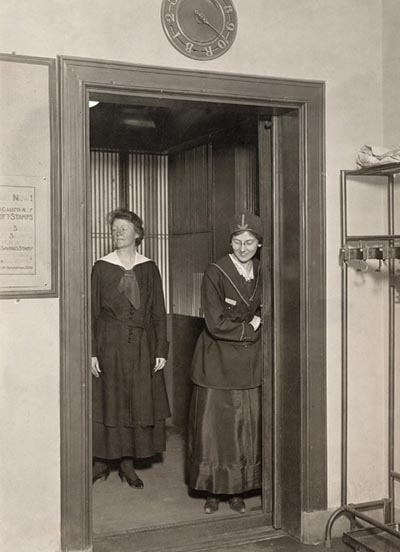 A woman operating an elevator, mid 1900s
A woman operating an elevator, mid 1900s
PR campaigns helped to acclimate people to using the elevators by themselves, said campaigns majorly ramping up once the 1945 elevator operator strike took place in New York.10 Before too long, operators were no longer needed and passengers were allowed to use elevators on their own.
Additionally, while not an advancement in technology, it is worth noting that many women had the chance to act as elevator operators during this time before the position was phased out.
Modern Elevators
These days, elevators are commonplace. For most people, they're just a part of life, rather than the technological marvels that they really are.
Elevators are bigger and better than ever in power, capacity, and safety. Some of them can even move left and right in addition to up and down.11 As of right now, the biggest passenger elevator in the world was built by the company KONE and is housed at the Jio World Centre in Dubai. It can safely transport up to 235 people at once.12
Elevator technology has also found uses in a variety of other everyday inventions, as well. Probably the most prominent of these would be the escalator. The original escalator was known as "revolving stairs" and was patented by Nathan Ames in 1859, though it was never actually built.13 The first model for an escalator that did end up in production was patented by Jesse W. Reno in 1892.14
Reno's patent was eventually bought by Charles Seeberger who, after adding ideas from a similar escalator design created by George A. Wheeler, eventually sold the idea to the Otis Elevator Company in 1899, uniting the two devices under the same brand.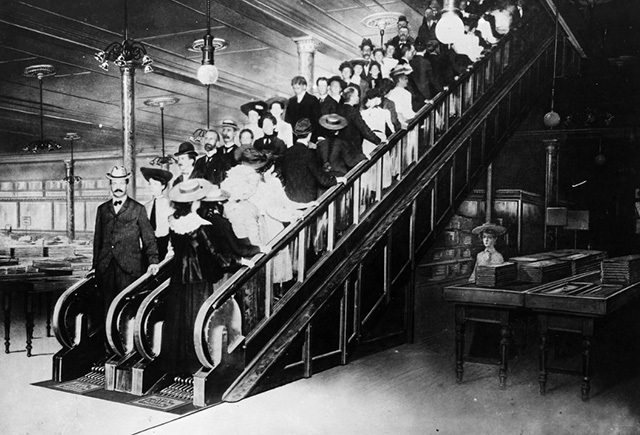 An early escelator at R.H. White Company store, Boston, Massachusetts in 1903
An early escelator at R.H. White Company store, Boston, Massachusetts in 1903
Elevators of the Future
While it might seem like everything possible has already been done in the world of elevators, that's not necessarily the case - at least, not on this world.
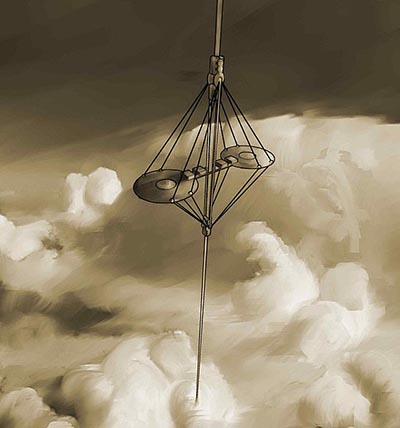 Conceptual drawing of a space elevator
Conceptual drawing of a space elevator
A currently theoretical evolution of the elevator is known as the space elevator. Rather than traveling to different floors in a building, the space elevator would allow people to travel to and from the surface of the planet and a space station directly above it.15 The idea dates back to at least 1895, but it's far from old fashioned.16 Should a space elevator succeed, it would mean a fundamental change in how humans are able to access outer space.
At present, designs for a space elevator simply aren't feasible to make in reality, as no materials exist that are both strong and light enough to support the elevator shaft's weight past the Earth's atmosphere and into space. With advances in science happening every day, though, it's only a matter of time until something like the space elevator takes one giant leap out of the world of science fiction and into our real lives.
Elevators in Summation
Elevators are truly a wonder of modern science. From their humble beginnings as ropes strung over some wood to the technologically complex metal boxes of today, they've made life easier for people for thousands of years. Appreciating the history and work that's gone into crafting the elevator and its related inventions is an easy way to show respect for the people who helped make it while learning a bit more about the world at the same time.
References
- Mechanical Problems referenced from the University of Nebraska, Lincoln
- De re metallica by Georg Bauer
- The history makers, Hoist Magazine
- Laying the foundation for today's skyscrapers, SFGate.com (archived)
- Smithsonian Magazine (archived)
- History page, Teagle Elevator
- Timeline page, EW Museum
- The History of Elevators From Top to Bottom, ThoughtCo.
- Official Gazette of the United States Patent Office, Volume 39, Issues 1-4 by the US Patent Office, referenced from Google Books
- Remembering When Driverless Elevators Drew Skepticism, NPR
- This German company is inventing an elevator that goes sideways, Construction Week Online
- Check out the world’s largest passenger elevator!, KONE
- Revolving Stairs patent, European Patent Office
- Endless Conveyor or Elevator patent, European Patent Office
- Space Elevator FAQ, the International Space Elevator Consortium
- Space elevator gets lift (archived)
Image Sources & Credits
- Ryutaro Tsukata
- Granger Historical Picture Archive
- The New York Public Library
- Library of Congress
- Wikimedia Commons
Recent Posts
-
Henry Ford: Automotive Visionary
Henry Ford was one of the pioneers of the automotive industry. Even today, 120 years after it was f
-
The Rise of the Elevator
For many people, elevators are one of those parts of everyday life that you just don't think about.


